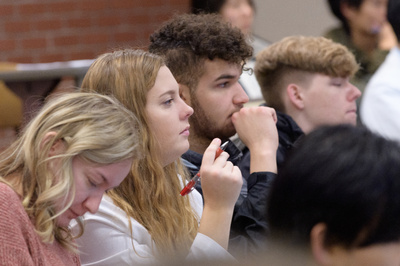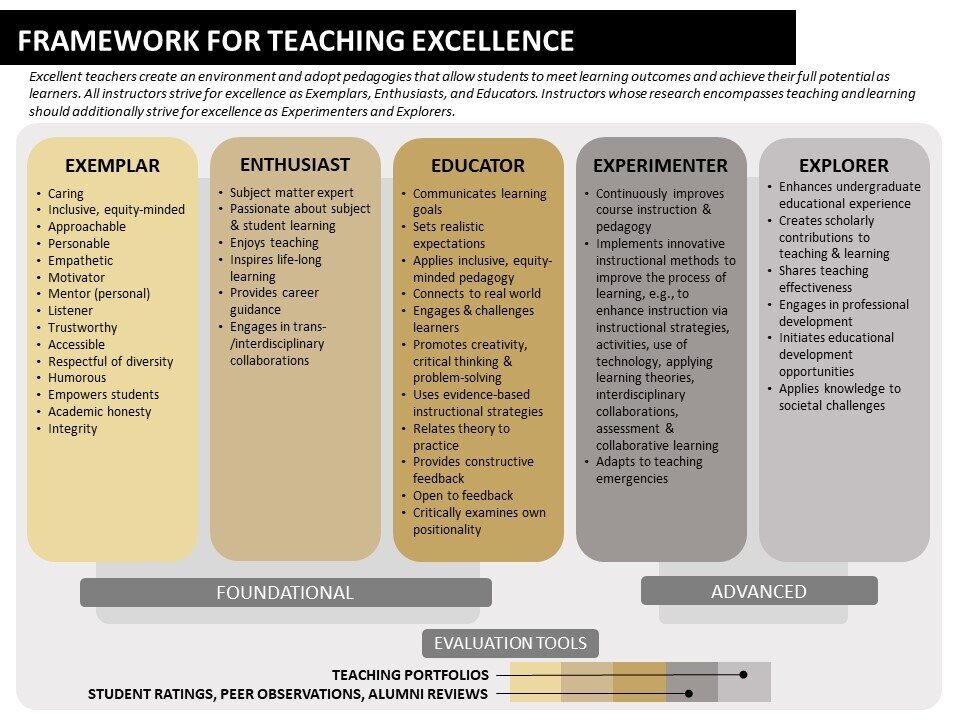
Solid Foundations Topics
Solid Foundations
Do you teach an online or hybrid course?
The definitions of online and hybrid learning are continually evolving, as evidenced by Singh and Thurman (2019) who identified 46 different definitions for online learning in peer-reviewed journals at that time.
For our purposes at Purdue, when we say online, we are focused upon asynchronous learning where learners do all of their work supported by a course meeting hub in our learning management system, Brightspace. Hybrid learning also uses Brightspace but has a requirement to meet synchronously in-person for course activities.
How do I ensure my hybrid or online course is ready to open to learners?
- Appropriate for all educators.
- Duration: 15-45 minutes reading; implementation 1-3 hours
Excellent teachers create an environment and adopt pedagogies that allow learners to meet course outcomes while achieving their full potential. But where do you begin? There are a variety of foundational elements that are recommended for any learner-focused course regardless of modality. Purdue’s Framework for Teaching Excellence organizes these elements below. Keep the characteristics of foundational Educator, Enthusiast, and Exemplar in mind as you build your course.

Start with a foundation
Purdue’s research faculty have compiled several resources in the Purdue Repository for Online Teaching and Learning (PoRTAL) that support the foundational pillars of Teaching Excellence. Below are links to help get you started.
How do I transfer my face-to-face teaching expertise to online? (Instructor Role Adjustment) 5-15-minute read.
What skills will help me adjust from face-to-face to online teaching? (Readiness to Teach Online) 5-15-minute read.
Reflect
After reading these resources, take a moment and reflect on your readiness for online design. What is already developed, and what will you need to do, learn, or create to be ready for the semester? We suggest that you create a to-do list.
Once you have your list, please proceed below to the Foundational Checklist. The checklist will guide you to use your course plan, have accessible course content, construct your course in the learning management system (Brightspace), and prepare to teach while being mindful of policies and inclusive pedagogy.
Foundational Checklist
Overview: This five-question checklist presents you with five unique steps for you to complete for a foundation.
- If you are missing an item, you will be given details on how to resolve that before you continue with the checklist.
Step 1: Do you have a course planned (mapped out) from course description and outcomes to assessments and all the activities between? If so, great job! Keep that course plan handy to deploy in the learning management system (Brightspace).
- Not quite yet? Or uncertain what a course map is? That’s okay. You will need to begin by creating your course outcomes, sometimes called actions that learners should be able to do upon successful completion of the course. Visit the Inclusive Pedagogy Outcomes and Objectives page for more details.
- After you complete this section, you may wish to enroll in the self-paced course to create a Comprehensive Course Design.
Step 2. Do you know how to ensure the content that you put into your course is compliant with the American with Disabilities Act Standards for Accessible Design and accessible for learners? If so, you’re doing well, and your learners will benefit. Continue to the next item for setting up Brightspace.
Step 3. Do you know how to input your content into Brightspace, set up your gradebook, and ensure your course is ready to go for the first week? Great! To help ensure that the first week of the class goes smoothly, use the resource: Want to make sure the first week of class goes smoothly?
- If this checklist is overwhelming, or you have never used Brightspace before, do not panic. The Urgent Assistance topic might be somewhere for you to get help next.
Step 4. Building a successful online or hybrid course is more than the course plan and learning management system. Are you feeling comfortable with facilitating online, ready for the environment, and able to create regular and substantive interactions between your learners and you, peer-to-peer, and learners interacting with your content? If so, you are ahead of the curve and can move to the final item on the foundational checklist.
- Not certain? We have help for you here, too. (Each document is based on research and takes 5-15 minutes to read.)
- PoRTAL, Instructor role adjustment
- PoRTAL, Developing your Online teaching persona
- Note, on the next page is a link for Teaching Tips and Tricks, a recommended self-paced training for course facilitation.
Step 5. Congratulations! You’re nearly done securing your foundation. As you wrap up the foundational level, we invite you to engage the connections between the Online and Hybrid topics and Academic Regulations as well as Inclusive Pedagogy topics. This will set you in good stead before you begin Day One of any of your future semesters.
What should I do next, after I complete this section?
We recommend that you continue to the next section of Solid Foundations, which offers slightly more advanced levels of assistance.